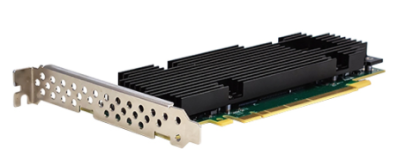On the road to 4G and 5G, MNO (Mobile Network Operators (MNOs) started to think of vRAN (Virtual RAN) and Open RAN, the main difference between them you can find here.
vRAN and Open RAN architectures help for higher channel capacity and easier deployment of edge-based services and applications. vRAN and Open RAN solutions are ideally located to deliver low-latency services with the flexibility to increase or decrease capacity based on the volume of real-time traffic and demand on the network.
One of the most compute-intensive 4G and 5G workloads is RAN layer 1 (L1) forward error correction (FEC), which resolves data transmission
errors over unreliable or noisy communication channels. FEC technology detects and corrects a limited number of errors in 4G or 5G data, eliminating the need for retransmission. Since the FEC acceleration transaction does not contain cell state information, it can be easily virtualized, enabling pooling benefits and easy cell migration.
For 4G LTE networks, FEC is employed during turbo channel coding while for 5G networks it is used during low-density parity-check (LDPC) channel coding. Both channel coding mechanisms add parity bits to the message. These redundant bits enable the receiving station to detect and fix bits that are corrupted during transmission. However, FEC is very compute-intensive. FEC is a common function that is not differentiated across vendor implementations and hence can be easily offloaded.
So Accelerating Card provides benefits by freeing up CPU resources while improving encoding/decoding throughput and latency.
One of the most trusted famous Acceleration cards is Silicom Lisbon ACC100 Card

Silicom’s eASIC ACC100 FEC Accelerator server adapter is based on the Intel vRAN Dedicated Accelerator ACC100, an Intel eASIC Nextreme-3S device. The ACC100 is packaged in a 35 mm x 35 mm FC1156 package with a 1.0 mm ball pitch Some balls are depopulated to facilitate break-out. The ACC100 provides 4G (Turbo) and 5G (LDPC) encode and decode over the PCIe interface.
The accelerator is implemented using Intel eASIC technology, which provides lower unit cost and power consumption than Application-Specific Integrated Circuits (ASICs), while also offering faster time-to-market and smaller footprint than prior solutions.
From a software standpoint, acceleration leverages the DPDK BBDEV extension as an open API between vDU application and Intel ACC100 Adapter.
The product attributes of the Silicom Lisbon ACC-100 accelerator card include the following:
- Supports eASIC Nextreme-3S family, 35 mm x 35 mm package.
- Supports onboard up to 16 Gbit DDR4 with ECC.
- PCIe Gen3, X16.
- Supports PCI Express Base Specification 3.0 (8 GTs).
- Features a half-length, low-profile design.
- Provides a selection of heat-sink types that are optimized to accommodate application power or host server limitations.
